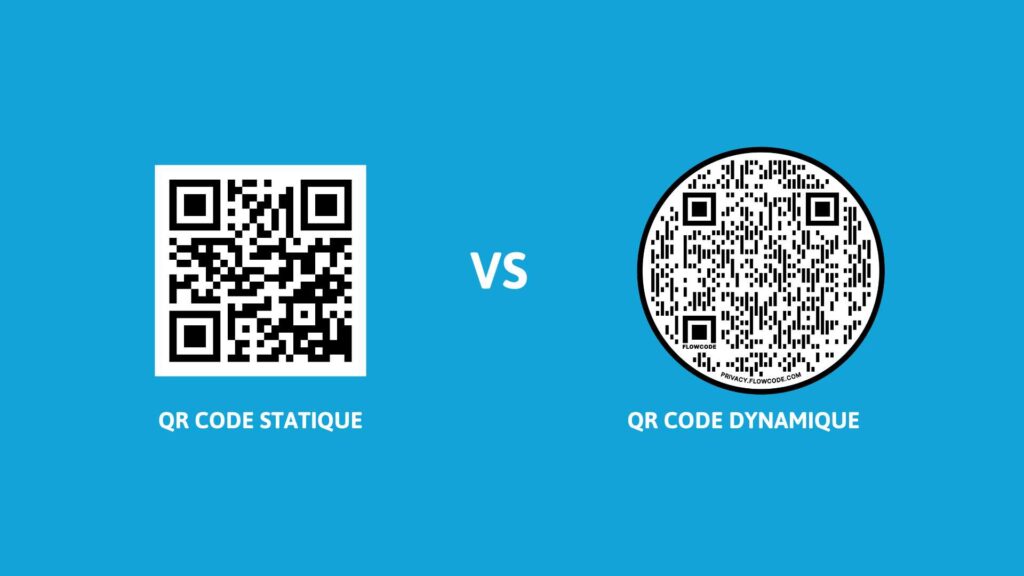Nowadays, QR codes are everywhere. On digital boarding passes, posters, restaurant tables, they’re nearly impossible to miss. In this article, I explore why more and more businesses are using them and how they’re being applied.
CONTENT
WHAT ARE THE TWO TYPES OF QR CODES
HOW DO BUSINESSES USE QR CODES?
What’s a QR code?
At their core, QR codes are scannable codes designed for fast access to information. They usually appear as black squares on a white background, but can be customised in colour, shape, and background. Today, QR codes come in all kinds of styles and colours.
They can be scanned with a phone, tablet, or even a computer. As the name suggests, scanning a QR code allows you to instantly trigger a variety of actions depending on the information it contains. For example, a QR code might let you:
- View a webpage
- Add a new contact
- Connect to a Wi-Fi network
- Watch a video
- Make a phone call
- Open an app store to download an app
- Or even open an email draft addressed to a specific recipient
And that’s just a few possibilities.
What are the two types of QR codes?

There are two main types: static QR codes and dynamic QR codes.
Static QR codes
Static codes are exactly what the name implies. They are fixed and unchangeable once created. If you generate a static QR code and later want to update the information it links to (for example, change the website it points to), you’ll need to generate a brand-new code.
They’re ideal for fixed details like:
- Your contact information (website, email, address, phone number)
- Wi-Fi login details (network name and password)
- Social media profile links (Facebook, Instagram, LinkedIn, etc.)
Many platforms allow you to generate static QR codes for free and without needing an account or subscription.
Dynamic QR codes
Dynamic codes, on the other hand, are flexible and editable. You can update the content linked to them without having to reprint or change the code itself.
For example, let’s say you create a dynamic QR code that links to a specific URL, and print it on a poster to share with customers. If you later want to change the URL, you won’t need to create a new code or reprint your poster just update the link behind the existing code. The next time someone scans it, they’ll be redirected to the new destination.
Dynamic QR codes are ideal for:
- Marketing campaigns (with regularly updated offers or promotions)
- Interactive content (videos, surveys, online forms)
- Restaurant menus (menus that change daily or seasonally)
They also allow for scan analytics. You can get data like the number of scans, locations, time of day, and device type.
Unlike static codes, dynamic QR codes are usually a paid service and require creating an account on a platform that supports them.
Why you should use QR codes?

photo: Fauxels on Pexels
QR code adoption exploded during the COVID-19 pandemic, as businesses sought contactless solutions to support social distancing. But the lasting benefits and possibilities explain why many continue using them in their digital strategies today.
Users are already familiar with QR codes
Roughly 89 million smartphone users in the US scanned a QR code in 2022. And this number is expected to exceed 100 million by 2025 (Statista, 2023).
In Asia, usage is even more widespread. In China, users interact with QR codes 10 to 15 times per day (QR Code Tiger, 2024). In Japan, the number of active users of QR payment services reached about 75.6 million in 2023 (Statista, 2024).
In Latin America, more than 110 million QR code payments were made in 2022 (QR Code Tiger), showing growing adoption even in emerging economies.
While QR code usage isn’t yet as widespread in Africa, the potential is significant: internet users on the continent are expected to reach 1.1 billion by 2029 (Statista, 2024), and smartphone adoption in Sub-Saharan Africa is projected to reach 87% by 2030 (Business Insider, 2023).
These numbers highlight a clear opportunity for businesses to capitalise on a global trend.
QR codes offer a smart bridge between offline and online worlds
By placing QR codes on posters, packaging, or flyers, you can direct customers to your website, social media pages, or online offers. This seamless transition encourages greater engagement and interaction with your brand.
QR codes simplify data collection and analysis
As mentioned earlier, dynamic QR codes allow you to gather valuable insights like scan volume, location, time of day, and device type. This helps you better understand customer behaviour and optimise your marketing efforts.
QR codes are cost-effective and quick to implement
They reduce customer service costs by instantly delivering information, enable self-service and contactless payments, and lighten the support team’s workload. Plus, generating them is often free or low-cost and requires little to no technical expertise.
They improve user experience
With just one scan, users can browse menus, download apps, or fill out forms. No need to type in URLs or search the web manually. It makes interacting with your brand smoother and more enjoyable.
How are businesses using QR codes?

Photo: iMin Technology sur Pexels
Today, businesses of all sizes and industries are using QR codes in different ways:
Marketing and Advertising
Businesses add QR codes to product packaging to link to:
- Websites
- Product details
- Nutritional information
- Customer reviews
You’ll also find them in digital or print marketing campaigns, on posters, flyers, billboards, window displays, and even in email newsletters, to lead customers to:
- Promo pages
- Competitions or discount codes
- Customer testimonials
- New product info
- Event invitations
- App downloads
Customer Service
QR codes give quick access to:
- Online support
- How-to videos or user manuals
- FAQs and product info
Businesses also use them to collect feedback after purchases or interactions.
In hospitality, QR codes support contactless hotel check-ins, access to amenities, info on local attractions, and even in-hotel dining.
Healthcare facilities increasingly use QR codes to share menus, enable service payments, and prompt visitors to leave positive reviews on Google or Bookings.s visiteurs à leur laisser des revues positives sur les plateformes comme Google et Bookings.
Loyalty Programmes
Many companies now use QR codes instead of physical loyalty cards. Customers store digital cards with QR codes on their phones, which they can scan to:
- Receive surprise gifts or instant rewards
- Earn points
- Access special member discounts
Events
Event organisers use QR codes on tickets for:
- Programmes and schedules
- Venue maps
- Speaker bios
They’re also added to slides, event magazines, or posters to:
- Collect live feedback
- Share exclusive content (recordings, presentations, documents)
You’ll even find them on digital or printed business cards for easy contact exchange during networking.
Logistics
In logistics, QR codes are used to:
- Streamline returns and cancellations
- Track packages in real time
- Manage inventory (inbound/outbound)
- Monitor product movement (from production to delivery)
- Provide delivery instructions
- Confirm deliveries
Conclusion
Now that you understand why and how businesses use QR codes, consider how you could integrate them into your digital strategy. It may be worth exploring the different types of QR codes to match your needs and learning how to generate them.
Share: